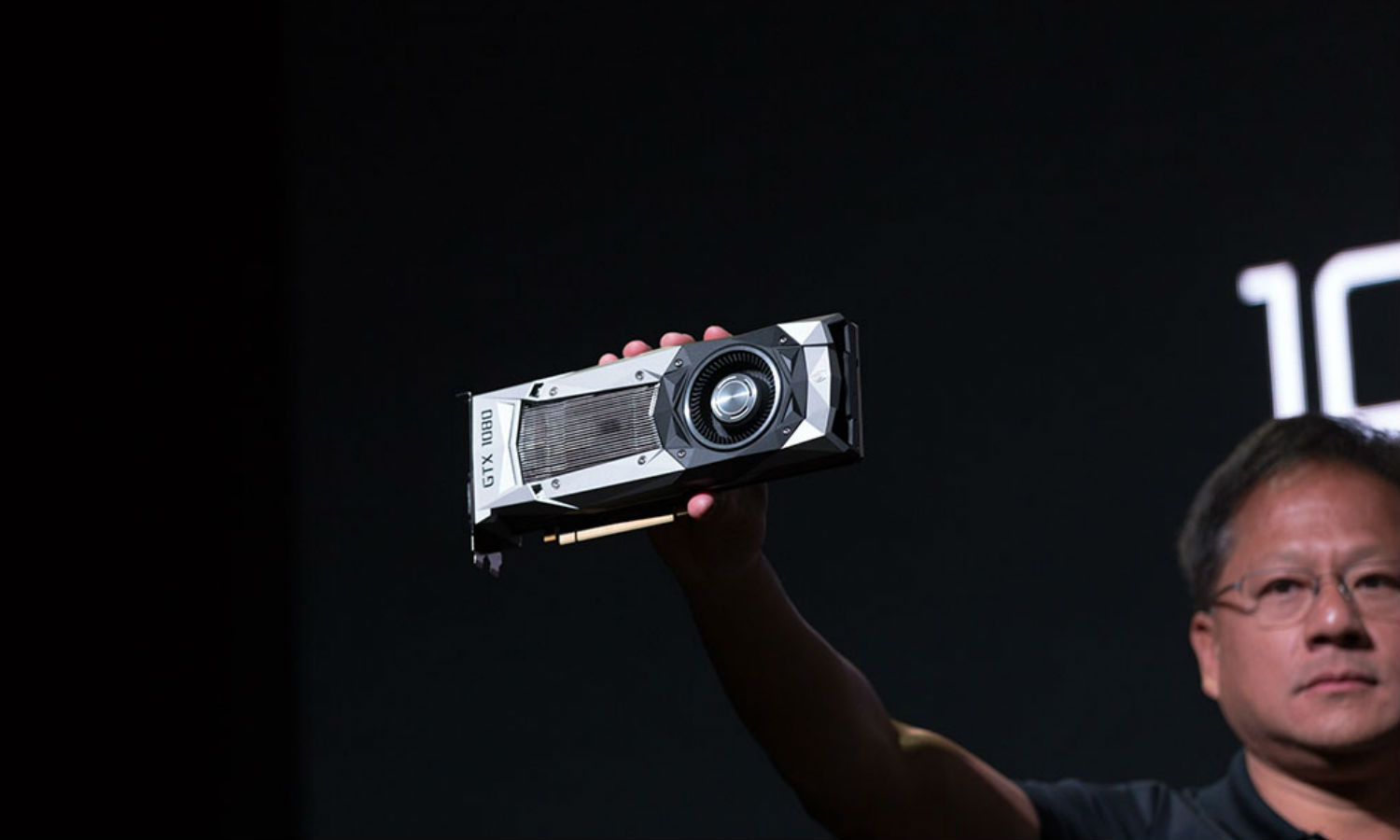What Nvidia's New Graphics Card Means for VR
Nvidia's powerful new GeForce GTX 1080 graphics card is set to change how we game in VR and traditional 3D.
AUSTIN, Texas — Nvidia has just unveiled the GeForce GTX 1080, the company's latest graphics card, which promises to be at least two times more powerful than last generation's GTX Titan card and three times more efficient. And while the internet is poring over the incredible clock speeds and CUDA cores, the bigger question is what does the arrival of GTX 1080 mean for both PC gaming and virtual reality?

PC Gaming
If the GTX 1080 lives up to the hype, gamers can expect "buttery-smooth" graphics, according to Nvidia's CEO, Jen-Hsun Huang. And sure enough, during the presentation last night (May 6), the company showed off some gorgeously rendered graphics from popular AAA titles including Tom Clancy's The Division, Tomb Raider and the upcoming Mirror's Edge. The proverbial cherry on top saw Epic Games founder Tim Sweeney show off some jaw-dropping character models that Huang informed the audience were being rendered in real time.
MORE: The Best Gaming Desktops Available Now
To celebrate even prettier graphics, Nvidia is launching what it's calling the first in-game game capture system, Ansel. Now gamers will have the opportunity to capture stunning super high-resolution images of their favorite games, which will help push in-game photography into the mainstream. Even better, the images can be captured from nearly any perspective in 360 degrees, allowing virtual reality fans to view the shots with headsets like Google Cardboard or HTC Vive.
Virtual Reality
One of the immediate benefits of GTX 1080 is the additional power that helps improve rendering with plenty leftover to compute complex calculations to trace audio position or how an explosion behaves in real-life. In addition, developers making VR titles can create more detailed objects and characters running at a smooth 90 fps — a necessity for any virtual reality program.
MORE: Best VR Headsets
Using Nvidia's VRWorks software development kit, developers can take advantage of the simultaneous multi-projection capability, which renders automatically for virtual reality. That, in turn, delivers high resolutions for the center of the screen where a person wearing a VR headset typically focuses. Meanwhile the edges of the scene will render at a lower resolution, helping to maintain the necessary refresh rate. The effect also works on traditional multi-monitor setups, creating a seamless image throughout the setup and eliminating typically warped objects found along the edges of each monitor.
Sign up to get the BEST of Tom's Guide direct to your inbox.
Get instant access to breaking news, the hottest reviews, great deals and helpful tips.
However, as much as VR relies on solid visuals, your other senses play a large part in making it a truly immersive experience. As more people get their hands on VR headsets, they're discovering the audio doesn't match up with what they're seeing. Nvidia VRWorks Audio software is taking 3D or spatial audio to another level, using OptiX ray-tracing tech to follow the path of sounds as they interact with the environment in real time. That means that if you're want to hear what the sound of one hand clapping sounds like in an empty room in VR, you'll get a realistic representation.
GTX 1080 should also help on the touch aspect of your VR experience. The PhysX for VR software will help deliver accurate physics and touch interactivity using a combination of positional tracking as it relates to handheld controllers. Now, when you go to pick up and toss a baseball at stack of cans, the resulting impact will be more realistic thanks to the real-time calculations.
Overall, the advent of the GeForce GTX 1080 graphics card will usher in a slew of technologies that will ultimately bring prettier games to both VR and traditional 2D. The card's increased power and more efficient power consumption means that developers can potentially make the next big thing without blowing the budget on hardware.
Sherri L. Smith has been cranking out product reviews for Laptopmag.com since 2011. In that time, she's reviewed more than her share of laptops, tablets, smartphones and everything in between. The resident gamer and audio junkie, Sherri was previously a managing editor for Black Web 2.0 and contributed to BET.Com and Popgadget.

